18 September 2013
You reproach me because each of my stories takes you right into the heart of a city without telling you of the space that stretches between one city and the other, whether it is covered by seas, or fields of rye, larch forests, swamps. I will answer you with a story.
Italo Calvino, Invisible Cities (chapter 9: Continuous cities, 4)
The Belgian Pavilion, this year, presents a monumental installation by Berlinde de Bruyckere, entitled Kreupelhout—Cripplewood. It consists of an enormous uprooted, gnarled elm tree, resembling a mangled, lacerated, suffering human body. The artist invited the South African writer J.M. Coetzee to contribute to the exhibition as curator and source of inspiration. Out of this collaboration has come an artist’s book, which presents the text of an unpublished short story by Coetzee—The Old Woman and the Cats—alongside images of de Bruyckere’s work. I have decided to propose this correspondence between images and words again by picking out an excerpt of the text, the opening of the story…
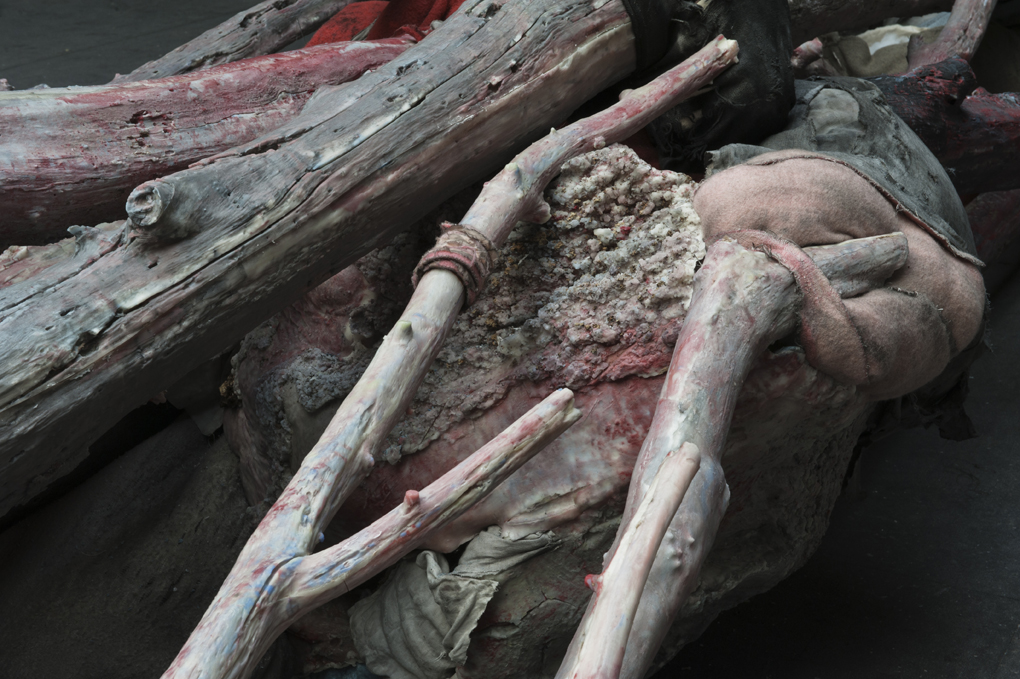
Berlinde De Bruyckere, Kreupelhout – Cripplewood, 2012-2013. © Mirjam Devriendt
He finds it hard to accept that, to have an ordinary if necessary conversation with his mother, he must come all the way to where she resides in this benighted village on the Castilian plateau, where one is cold all the time, where for supper one is given a dish of beans and spinach, and where in addition one has to be polite about these half-wild cats of hers that scatter in all directions every time one enters the room. Why, in the
evening of her years, can she not settle down in some civilized place? It was complicated getting here, it will be complicated getting back; even being here with her is more complicated than need be. Why must everything his mother touches become complicated?
The cats are everywhere, so many of them that they seem to split and multiply before his eyes like amoeba. There is also the unexplained man in the kitchen downstairs, sitting silent and bowed over his own bowl of beans. What is this stranger doing in his mother’s house?
He does not like beans, they are going to give him wind. To follow the diet of the nineteenth-century Spanish peasantry just because one is in Spain seems to him an affectation.
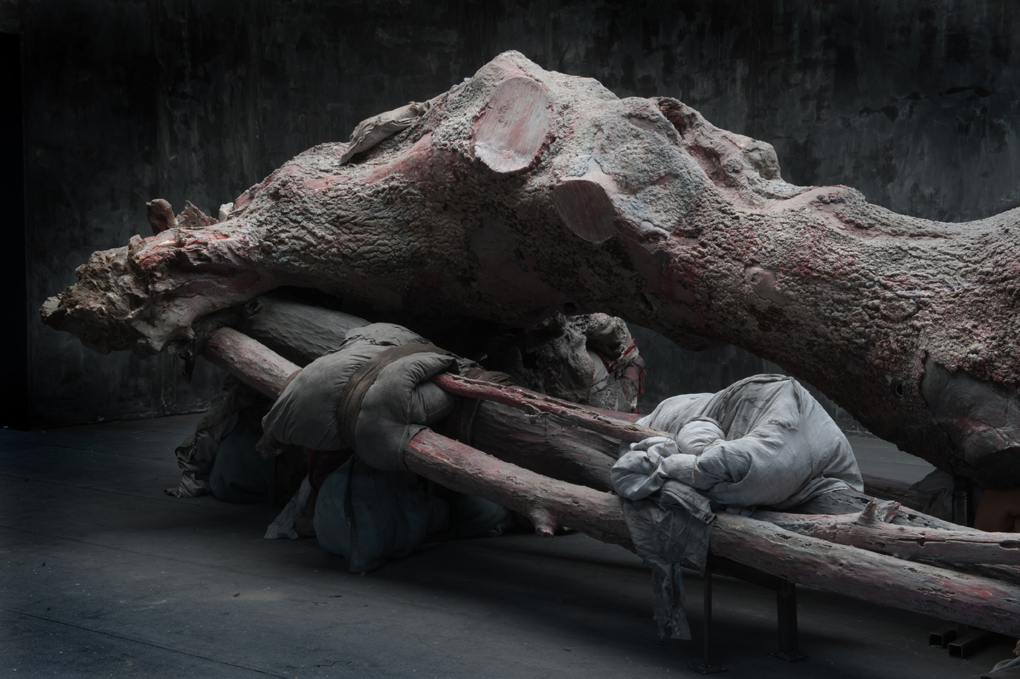
Berlinde De Bruyckere, Kreupelhout – Cripplewood, 2012-2013. © Mirjam Devriendt
The cats, which have not yet been fed and will certainly not put up with beans, are all around his mother’s feet, writhing and preening themselves as they try to attract her attention. If it were his house he would smite them all out. But of course it is not his house, he is only a guest, he must comport himself politely, even toward the cats.
“That’s a cheeky little rascal,” he remarks, pointing – “that one there, with the white mark on its face.”
“Strictly speaking,” says his mother, “cats don’t have faces.”
Cats don’t have faces. Has he made a fool of himself again?
“I mean the one with the white patch around its eye,” he corrects himself.
“Birds don’t have faces,” says his mother. “Fish don’t have faces. Why should cats? The only creatures with proper faces are human beings. Our faces are what prove us human.”
Of course. Now he sees. He has made a lexical slip. While human beings have feet, animals have paws; while human beings have noses, animals have snouts. But if only human beings have faces, then with what, through what, do animals face the world? Anterior features? Would a term like that satisfy his mother’s passion for exactitude?
“A cat has a mien, a bodily mien, but not a face,” says his mother. “Even we are not born with faces. A face has to be coaxed out of us, as a fire is coaxed out of coals. I coaxed a face out of you, out of your depths. I can remember how I bent over you and blew on you, day after day, till at last you, the being I called you my child, began to emerge. It was like calling forth a soul.”
She falls silent. […]
J.M. Coetzee, The Old Woman and the Cats
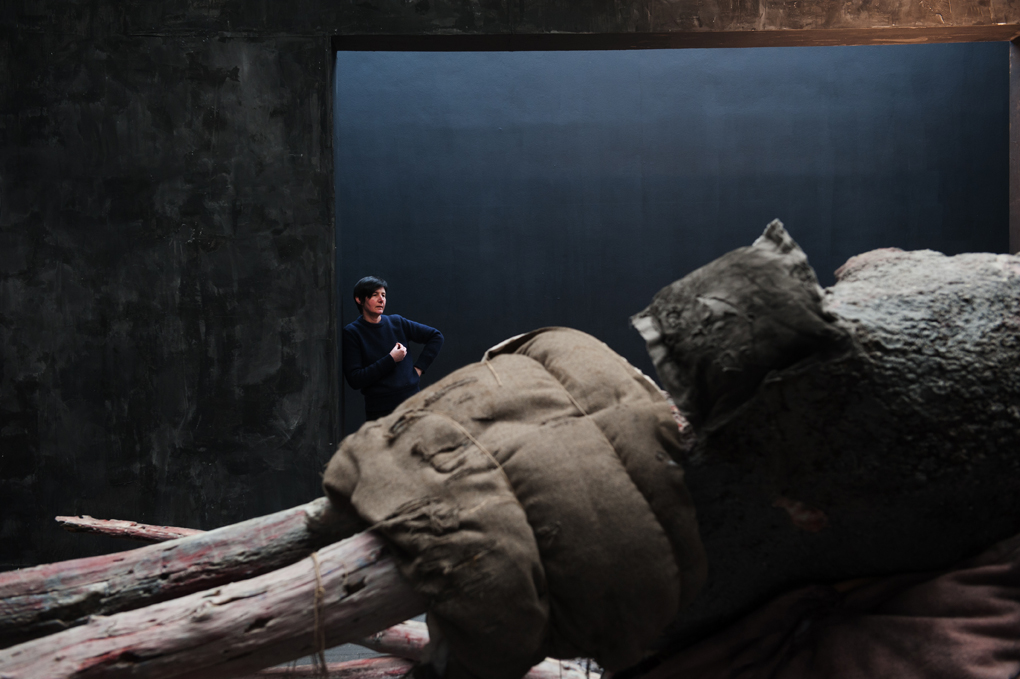
Berlinde De Bruyckere, Kreupelhout – Cripplewood, 2012-2013. © Mirjam Devriendt
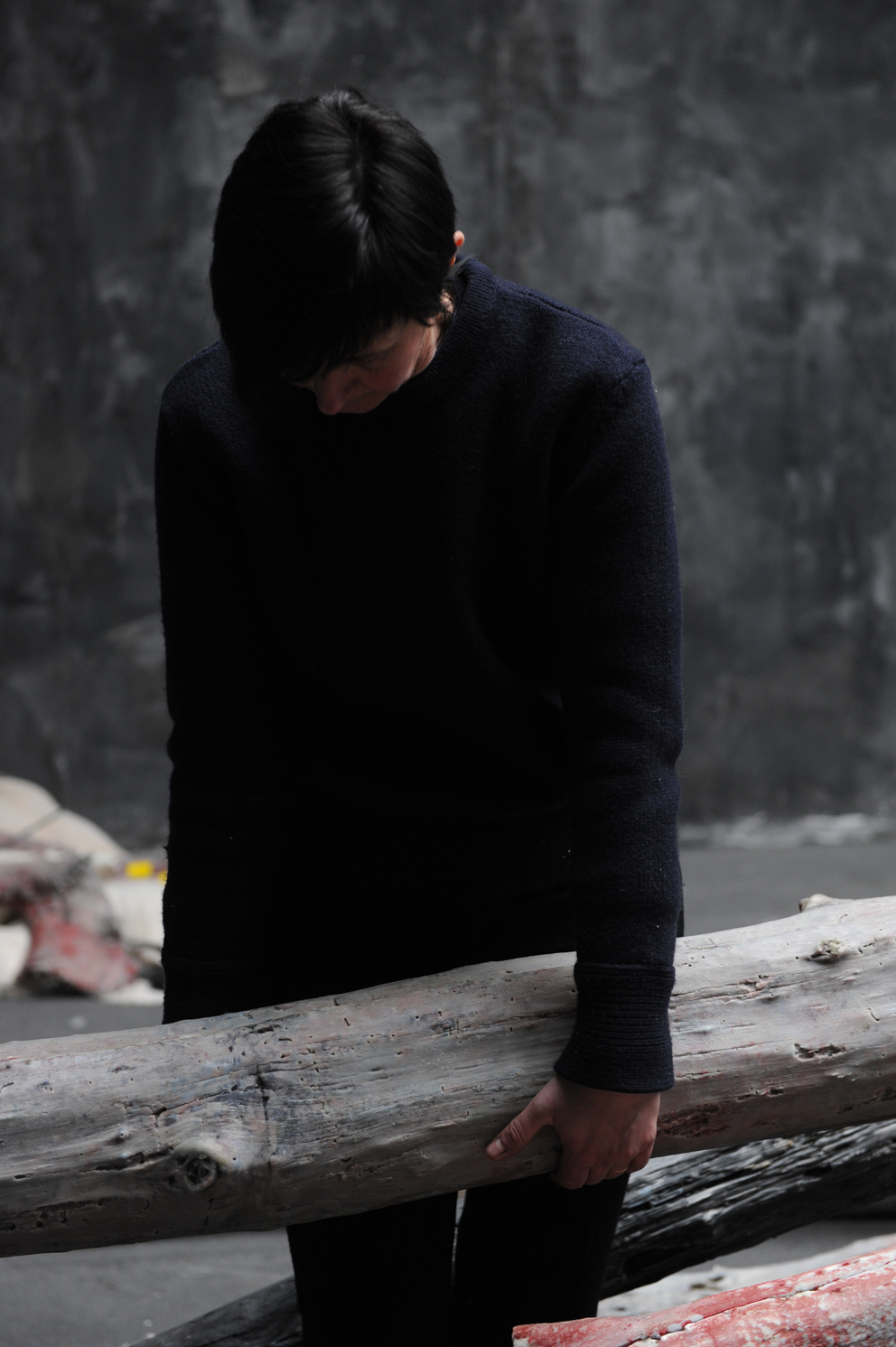
Berlinde De Bruyckere, Kreupelhout – Cripplewood, 2012-2013. © Mirjam Devriendt
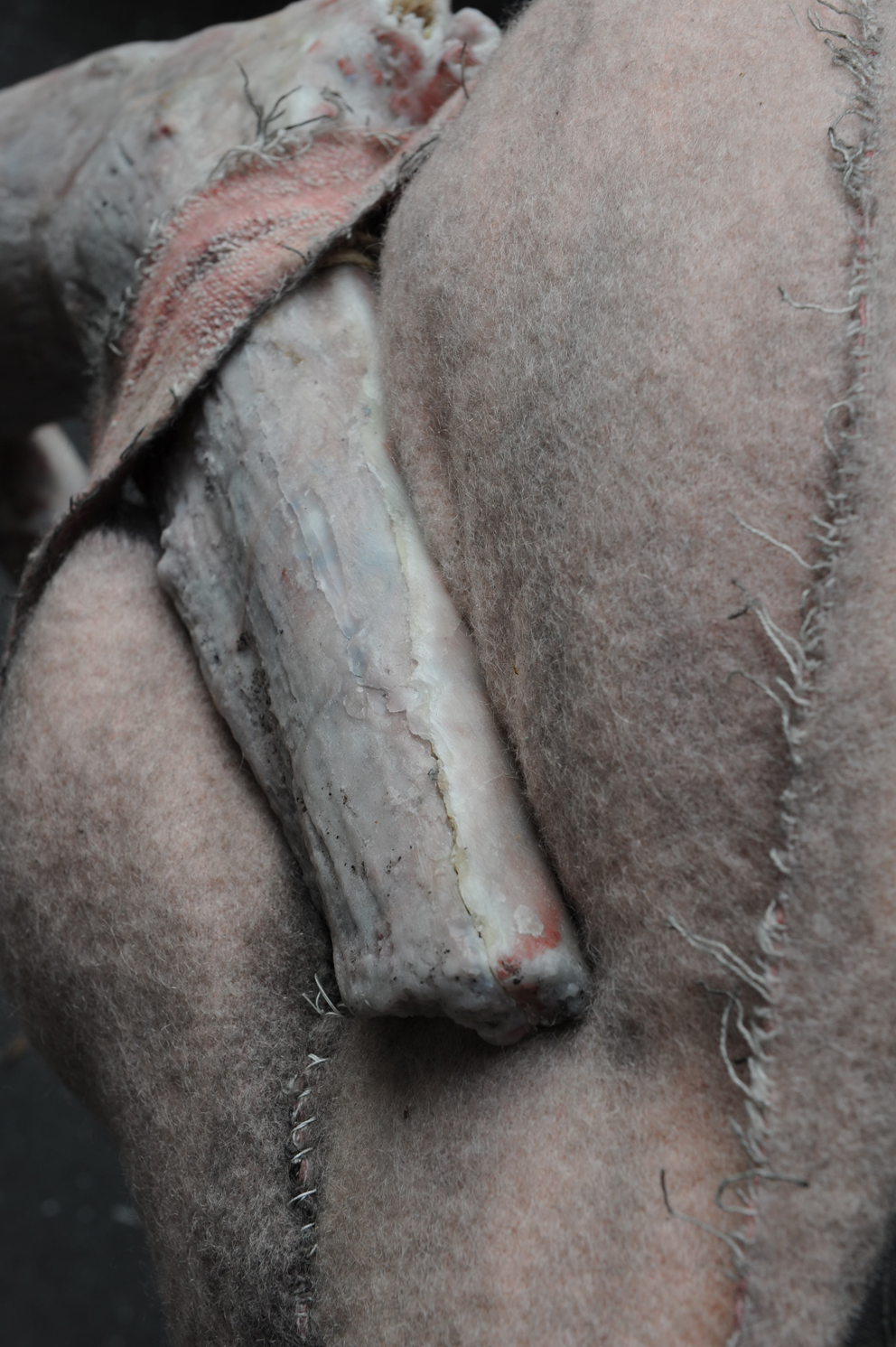
Berlinde De Bruyckere, Kreupelhout – Cripplewood, 2012-2013. © Mirjam Devriendt
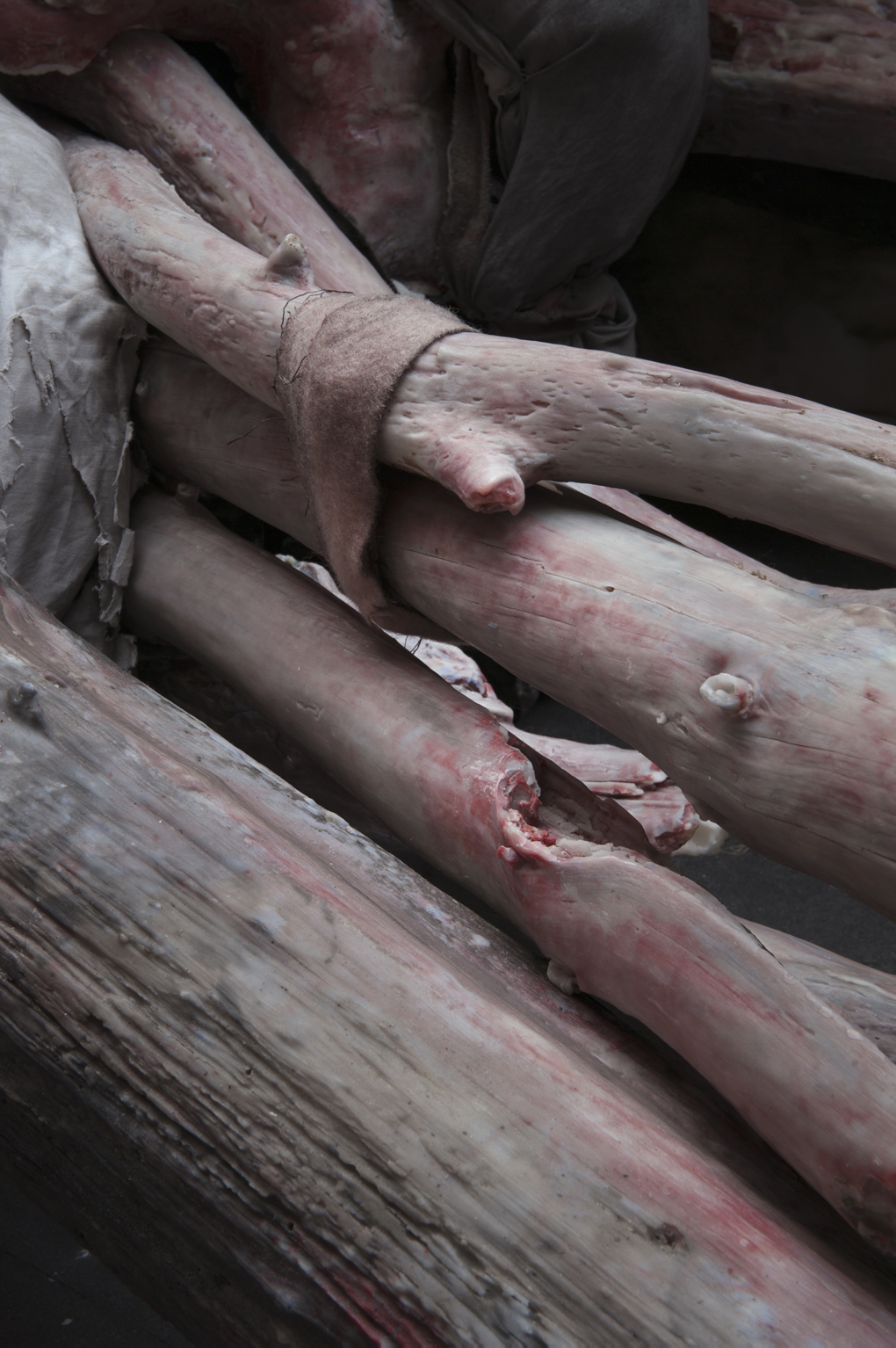
Berlinde De Bruyckere, Kreupelhout – Cripplewood, 2012-2013. © Mirjam Devriendt

Berlinde De Bruyckere, Kreupelhout – Cripplewood, 2012-2013. © Mirjam Devriendt

Berlinde De Bruyckere, Kreupelhout – Cripplewood, 2012-2013. © Mirjam Devriendt
Follow Federico Florian on Google+, Facebook, Twitter.
By the same author:
ArtSlant Special Edition – Venice Biennale
Notes on ‘The Encyclopedic Palace’. A Venetian tour through the Biennale
The national pavilions. An artistic dérive from the material to the immaterial
The National Pavilions, Part II: Politics vs. Imagination
The Biennale collateral events: a few remarks around the stones of Venice